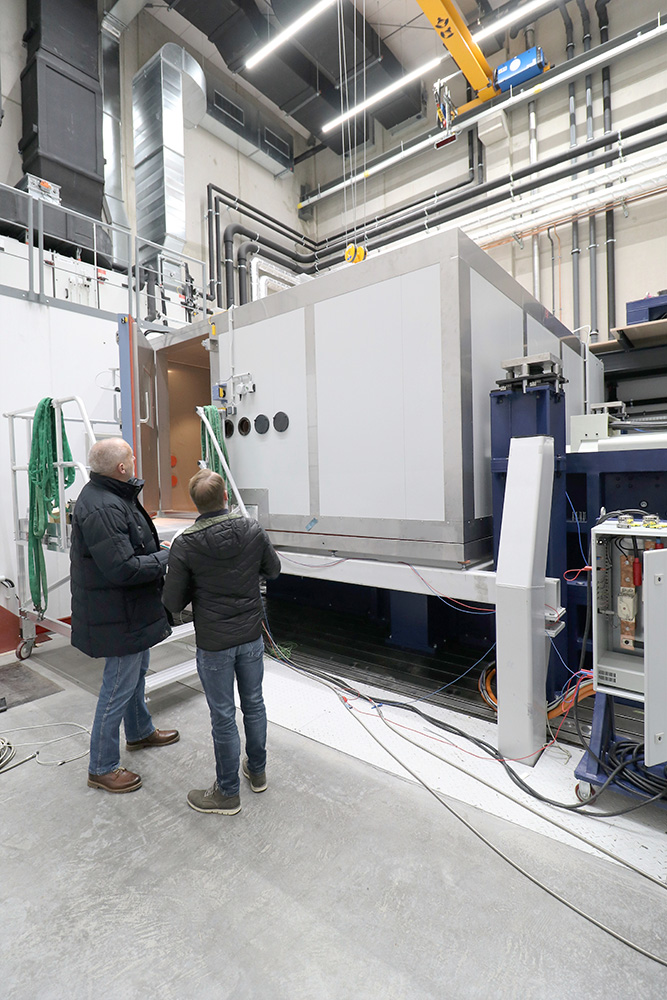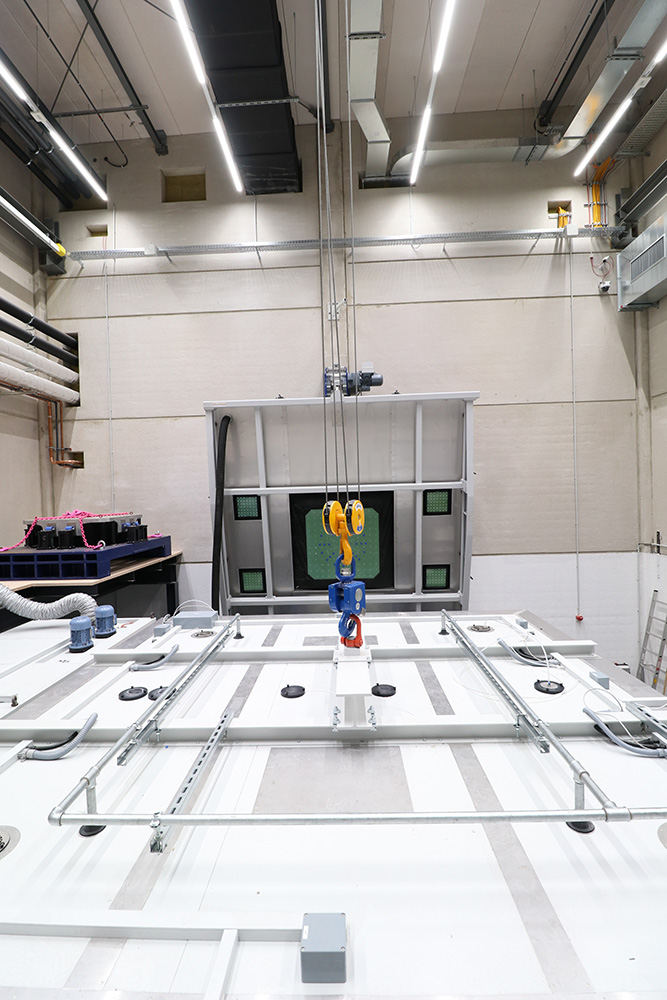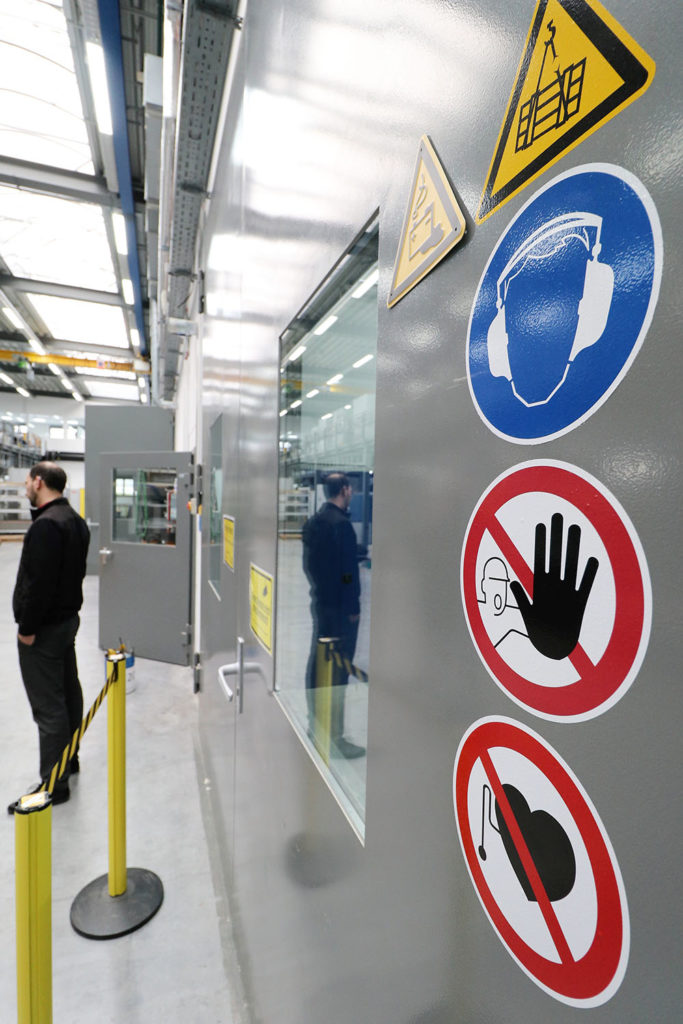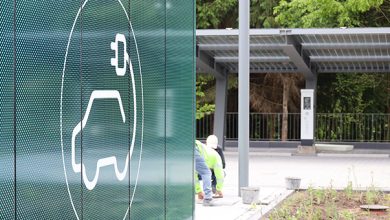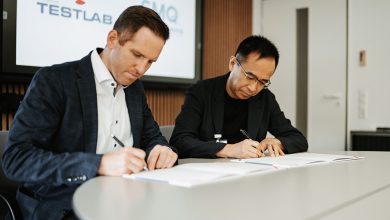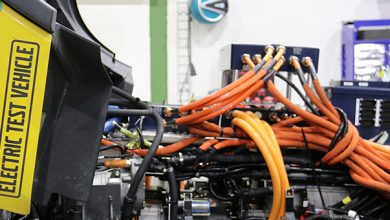The wave of e-mobility is cresting. And it’s massive. It’s associated with the development and testing of new technologies in previously undreamt-of dimensions. At Phoenix Testlab in Blomberg, lithium-ion battery packs weighing up to 800 kg are tested. A look behind the scenes at a modern torture chamber.
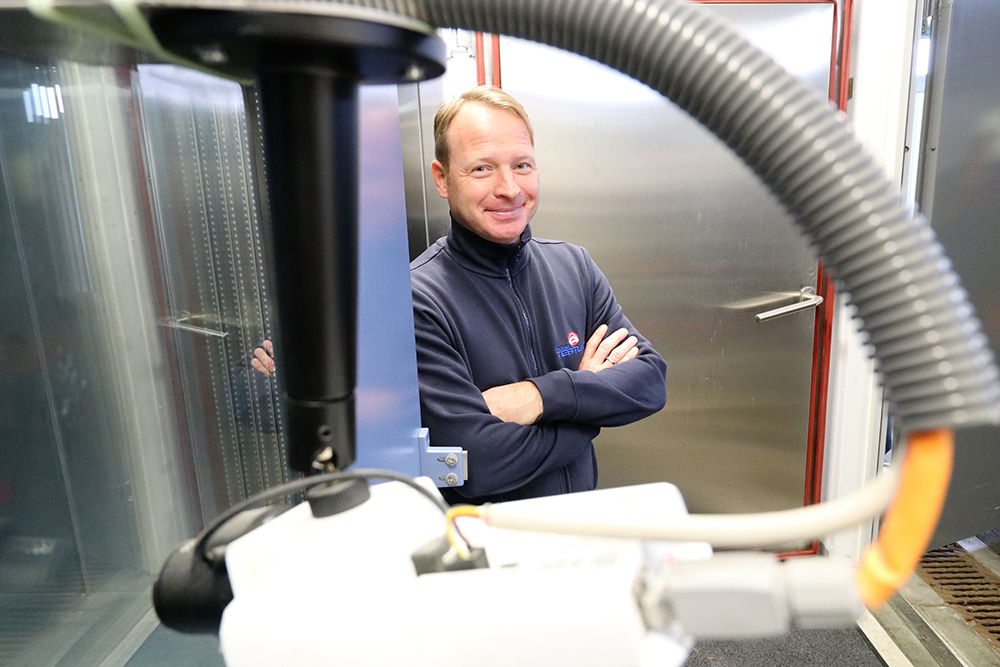
T he topic is a proverbially hot one: again and again, reports of electric vehicles starting on fire haunt the news. The topic of accumulators is becoming increas- ingly explosive due to the enormous energy density required and their use in everyday life on wheels. And with this also come things like durability, permanent load, and safety. This is why Phoenix Testlab in Blomberg is one of the very prime addresses for the automotive industry.
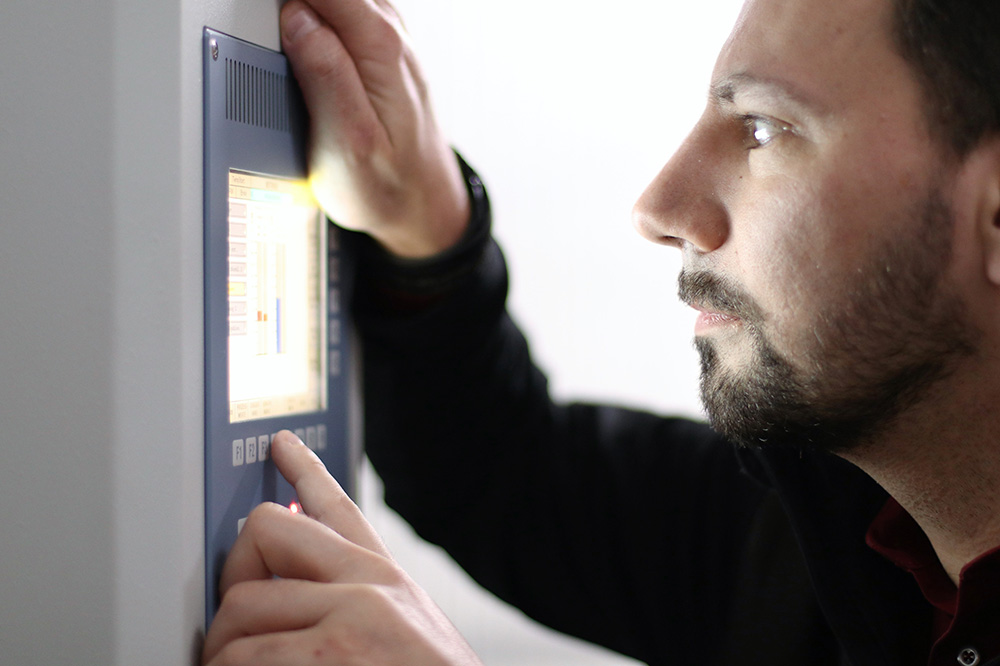
“We’re making batteries old. And very quickly.” The person saying that isn’t wearing a magic hat and doesn’t own a time machine. Michael Jonca heads the battery laboratory at Phoe- nix Testlab. Not only does he come across as extremely like- able, but also as very respectable. So no hocus-pocus, but real technologically pioneering work to tackle the energy sources for e-vehicles.
The lords of time travel
“Our job is to artificially age lithium-ion batteries in the prototype stage. With our sophisticated test methods, we stress the sensitive energy sources to such an extent that it corre- sponds to far more than what is sustained over one vehicle service life.” A virtual time machine. A little magic after all! “We strictly follow the manufacturers’ specifications,” Jonca says, explaining his tasks.
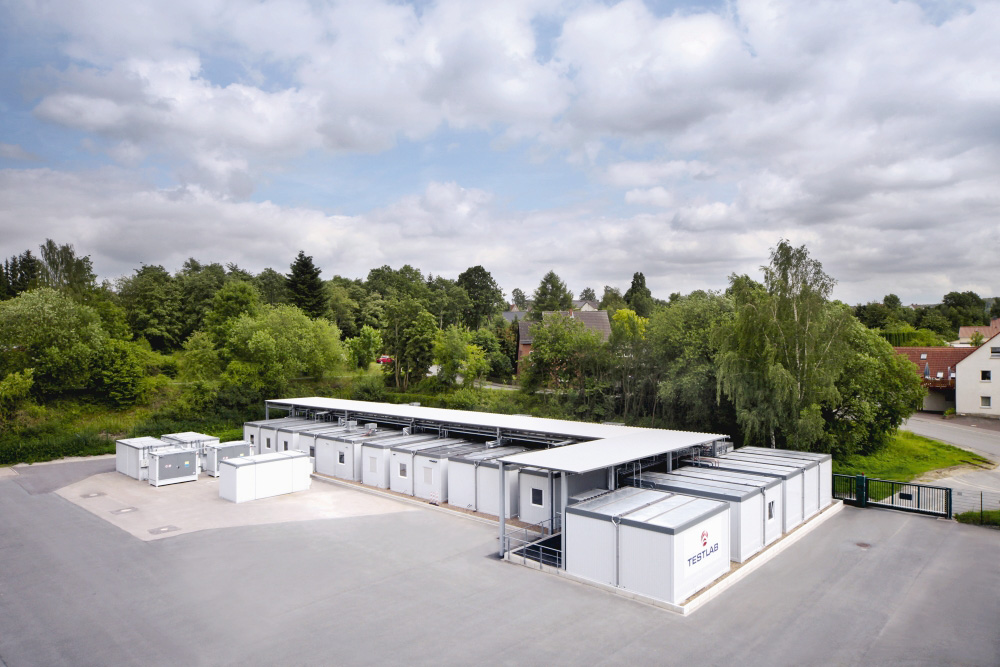
Phoenix Testlab is an independent test institute found- ed in 1994 by Phoenix Contact and which is now operating under the name Phoenix EMV-Test GmbH. The reason it was founded was the electromagnetic compatibility test (EMC for short), which has been mandatory since that time. From the very beginning, the independence of the institute was an important feature of the test laboratory, despite its proximi- ty to the founding company. This independence is one of the cornerstones for the rapid success of this high-tech company. Another one is that the customer is king.
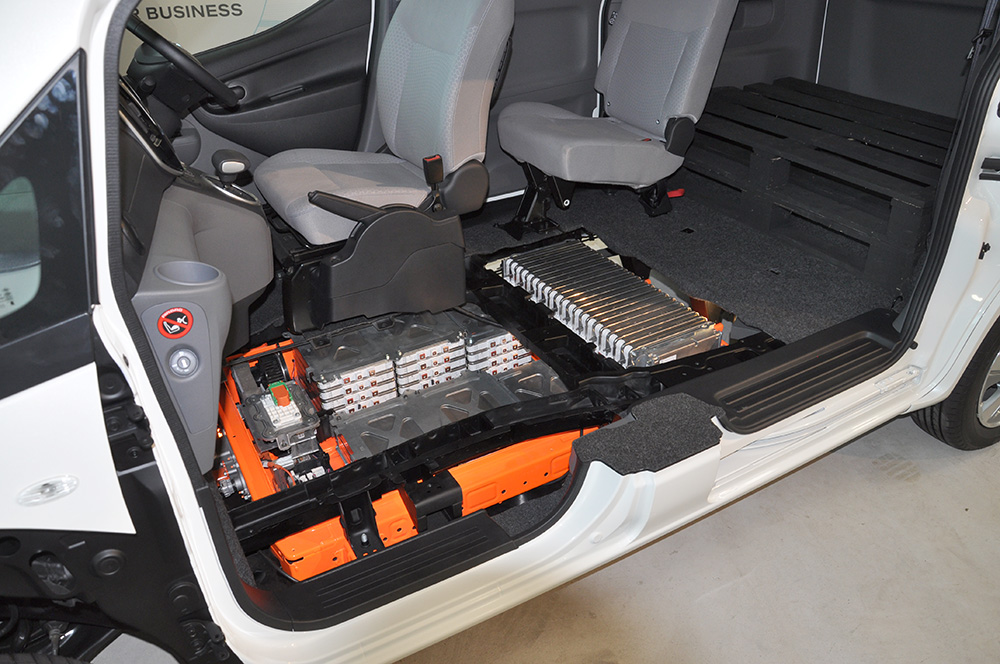
Therefore, in the hallowed halls at Königswinkel 10, strict customer specifications often apply. “Sorry, but these devices and test objects are off-limits to photographers.” This applies especially to the automotive industry. Since 2011, Phoenix Testlab has been an almost indispensable partner for these companies and their up to 800-kilogram energy storage systems. In spring of this year, one of the most modern laboratories in the entire industry for testing lithium-ion batteries and modules began operation on an area of approximately 950 square meters.
“The construction of this test center began with these con- tainers.” Together with Thomas Worsch, the marketing expert from Phoenix Testlab, we start a tour of the test institute. “Containers are ideal because we can handle the respective test complexes and the test specimens individually for safe- ty reasons,” Michael Jonca explains. “Although we don’t test any destruction scenarios here, so we don’t intentionally ex- pose the test object to destructive force. But our durability and service life tests also stress the large batteries considerably. ””Therefore, there is also a very close cooperation with the lo- cal fire brigade, which has to quickly get a potential fire under control without endangering the rest of the test lab and the employees and surrounding residents.”
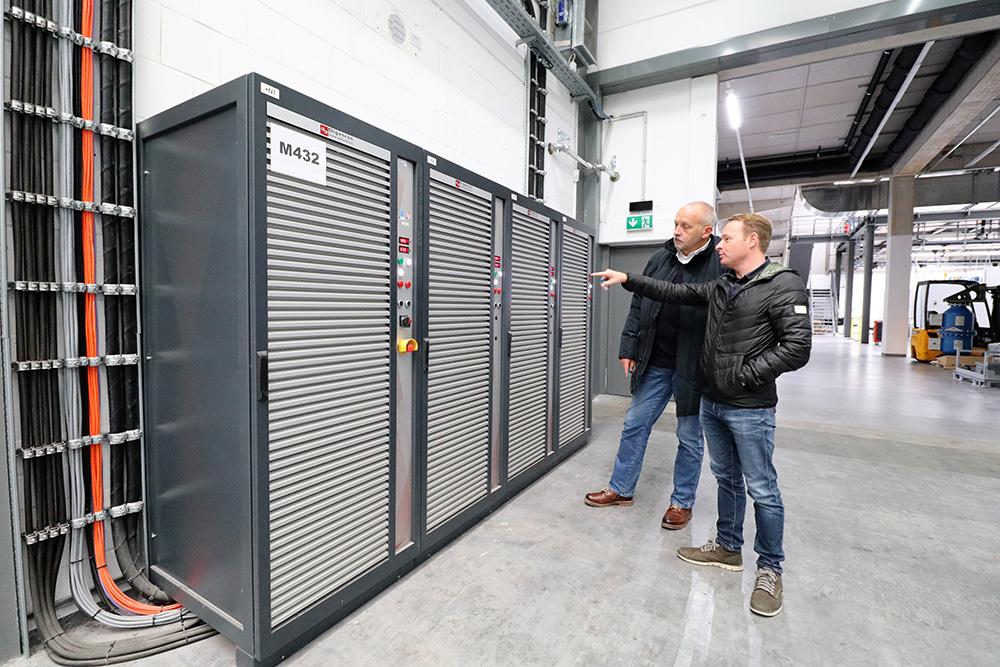
In the torture chamber
The large battery blocks are subjected to months of hard work The first stop is the electrical test facility. “We’re charging at full power here, boosting to full charge in an hour or two. Several thousands of times. Our power consumption is therefore similar to that of the entire Phoenix Contact production in the neighborhood.”
No wonder then that, at the end of this test run, the test objects are left to sit for one or two weeks until they are returned to the client. “The chem- ical reactions in the battery don’t end abruptly; they continue for awhile,” explains the head of the battery laboratory. “The danger of ignition during transit would be too great to return them immediately.”
Shaking for the shipping industry
Things are getting mechanical. We march to the next torture chamber. It sounds like a fairground: “This is our shaker, our shaking chamber. Here we shake the battery pack for about two weeks uninterrupted, combined with an environmental chamber so that we can simulate heat and cold.” The dimensions of the test stand, which is as tall as a house, are enormous. “We lift the test object together with its aggregate frame, which we’ve manufactured, into place with a five-ton crane.” The steel shaking plate alone weighs 35 tons. It’s spring-mounted in the foundation, otherwise the ground would tremble in a wide radius around it,” reports Thomas Worsch. Jonca adds, “Here, we also test components from shipping and industry, not just batteries, but also entire control cabinets.”
The test stand vibrates using the “uniaxial vibration method”. To shake a test object in all three dimen- sions, its position on the test system is changed. The test stand also has one more nasty surprise for the specimens: “We also simulate a mechanical shock, such as driving over a curb. That’s a load of up to 50 g on the test object.”
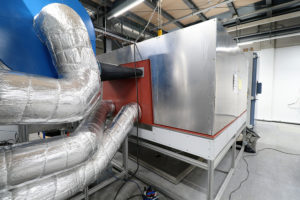
The batteries sometimes spend six months, sometimes even almost a year and a half, in the Phoenix Testlab, depending on customer requirements. The pitiful endurance runners can’t avoid the next martyrdom test: the T-shocker. “For ten to thirty days, the battery pack must be able to with- stand a temperature drop of -40 °C to +75 °C. These are very typical demands in the automotive industry,” Michael Jonca says, letting us marvel. “Here, the strength of the outer casing is strained.”
Last hurdle swimming pool
If the test object is still in a good mood up to this point, the next torture looming ahead will place it in the plunge pool. “This large pool is brand new,” Jonca’s voice echoes through the specialized swim- ming space. On the ceiling is the large crane that lifts the batteries into cold or warm water. “We can also heat the water.”
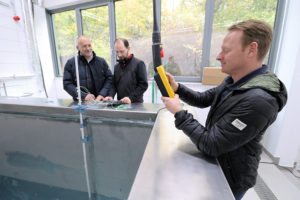
A team of engineers and staff is responsible for each battery pack, since the respective test proce- dures are completely different. “At the moment, we’re testing twelve different test objects, and therefore also twelve different energy sources, for their respective electric vehicles.” If you accompa- ny the nice Mr. Jonca through his torture chambers, you can be sure that the test objects that escape unharmed here will endure almost any torture with ease.
